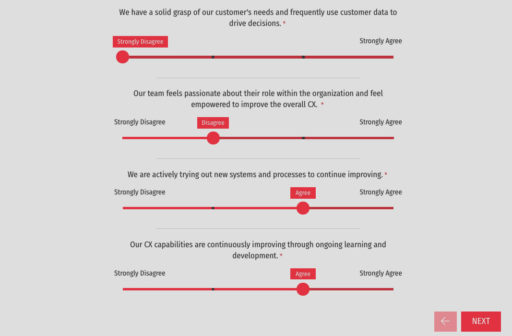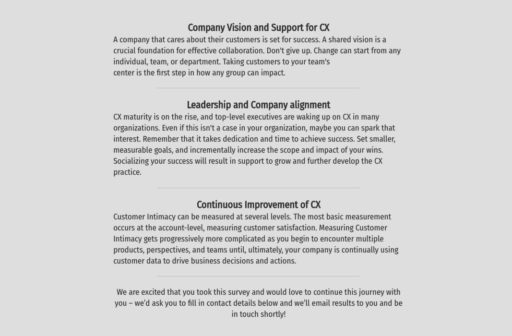Design Thinking: Problem-solving with perspective

One of our most popular blogs of 2020 discussed unlocking innovation through Design Thinking. The Design Thinking process’s first step is ‘gaining empathy’ or understanding the problem to be solved. For a data-driven organization, gaining that understanding means collecting and measuring the perspective of the users. As if this wasn’t challenging enough, CV-19 presented three additional challenges:
- Customer behavior has changed (past data isn’t reliable)
- Many formal and informal data-gathering practices have shifted (e.g., meeting people)
- Introducing new data-gathering practices is a challenge(again, meeting people)
How to gain an understanding?
A frequent pulse check is often more meaningful in a rapidly changing landscape than a one-off investment to gain a thorough understanding. We started looking into online surveys and questionnaires as a means of gaining insight and building empathy. When doing this, there are two aspects to consider; the method and the technical implementation. The method includes translating the business problem into a research question and questionnaire, recruiting respondents, capturing answers, and synthesizing and summarizing the findings. This is the intellectual work where you want to spend your time. The other aspect is the technical implementation. This is the repetitive work that you want to automate wherever you can.
Criteria for an insights generation tool
We formulated five key criteria for the tool. Ok, we didn’t have a list of five when we started. Some of the tooling limitations became obvious through a good old-fashioned trial and error.
- An online tool that allowed building and modifying the questions fast and effectively.
- No licensing restrictions concerning sample size, follow-up questions, or survey structure changes.
- The flexibility to brand the tool with either our own Avalon CX look and feel, a client’s branding, co-branded or anonymous, depending on the situation.
- Easy adjustability of the questionnaire without asking permission or worrying about resource availability.
- Ability to collect the results and retain them precisely for as long as we’d agreed with the client.
So, how did it work out?
Our first call was to look at Google Sheets. A fantastic and straightforward, easy-to-use tool that is readily available. Our left side of the brain loved it, but we doubted whether it would a) serve all of our needs and b) look professional enough. We also couldn’t brand it as we wanted, nor could we embed it to our website as smoothly as we wanted, so we moved on to other options. We looked at four additional sets of tooling before finding what we were looking for. Without naming the systems, we found out the following.
Most of the systems are designed for one-way information gatherings, such as leaving a review or customer feedback. We wanted an option that would allow us to give something valuable back to the respondents immediately. This idea follows our corporate culture of giving back. If someone bothers to reach out or respond to us, the least, we could do to show our appreciation is to return the gesture. By comparing his/her answers to peers’ previous responses, we immediately have some insights that we want to share. Many tools, at best, offer a boolean logic linking back to a single question. “If the answer to question 1 is A, then present string XYZ” We couldn’t build a more complex logic with many tools.
The second issue was the look and feel. Many tools are quite limited in the presentation of data. We wanted to make the experience clean, intuitive, and effortless. We specifically didn’t want the URL to direct to an unknown site, have visible ads, or risk having some third party reaching out to the respondents. Even a simple thing like the inability to present immediate feedback and asking for contact details on the same page ruled out one of our options.


In the end, we were satisfied with our choice. We call our insights-gathering tool and process Avalon CX SurvTechTM. If you want to become data-driven without repeating all the mistakes we made, feel free to reach out to us.
